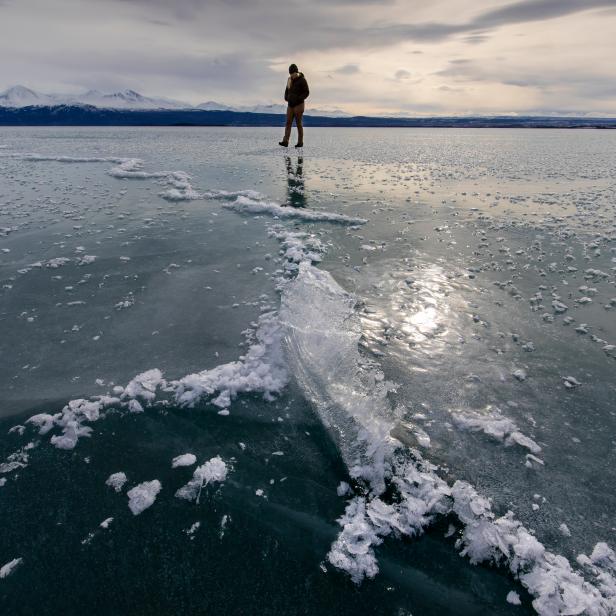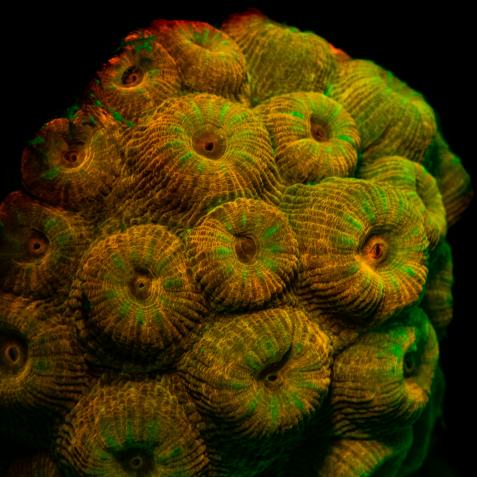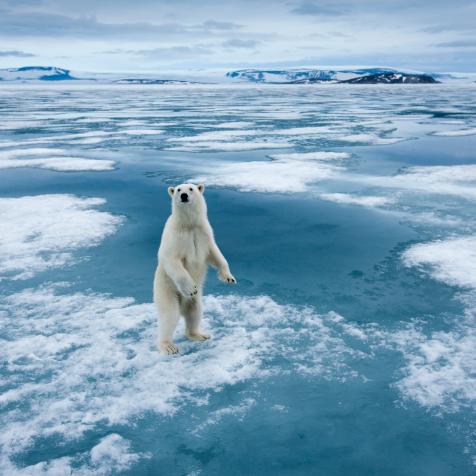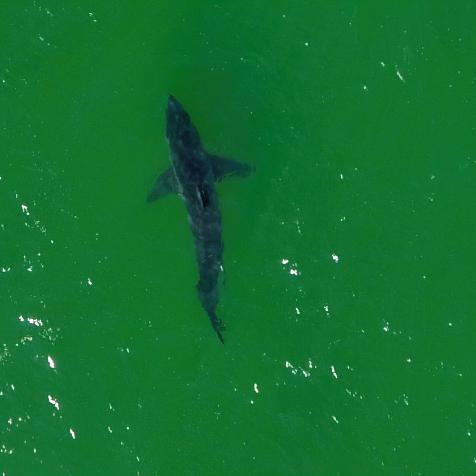
Ian Shive
Capturing Alaska: Winter into Spring

The best stories are those that exist around authentic moments. In this case, showing the earliest signs of spring as cracks and textures emerge on a lake in Alaska.
Living and feeling authentic experiences outdoors is critical to successful photography. Many photographers spend a tremendous amount of time focused on the technical aspects of photography, but what makes a truly great image is your ability to convey a story.

When Perfect is All Around...
Kenai National Wildlife Refuge is often called “Alaska in miniature.” It has a little bit of everything, from gorgeous white-capped mountains to ribbons of blue rivers flowing through the forests and ancient glaciers hiding high above, feeding life to the landscape below. It’s a place I've been fortunate to have visited many times over the last few years, building a gallery of beautiful still images representing one of America’s greatest public land systems.

Ian Shive
Kenai National Wildlife Refuge, Alaska: Skilak Glacier
In colder climates, where there are large frozen lakes, it can be common to hear unusual sounds echoing across the landscape, caused by the shifting of the ice in the lake. If you've never heard them before, they are unusual twangs that can be quite loud, like a sonic boom or the trill of a whale underwater. There’s an almost primordial sound to them, calling out across the wind. It’s not often that nature delivers sound beyond the ordinary. We’ve all heard birds, rain, thunder, rivers, wind, and ocean…but ice? As someone who lives in Southern California, I can’t say I’ve had the opportunity to hear this that often, so I was exceptionally amazed!
I decided to try and find the source of the sound, descending from the cliff to the edge of frozen Skilak Lake in the heart of the refuge. The lake had a thick layer of ice capping it. Cars and snowmobiles were even parked in the middle of it so people could ice fish. Regardless, my own instincts, and the sounds of the ice shifting, meant I would stay close to the edge and not venture out on the ice too far.
Are You Ready for the Close-Up?

Ian Shive
Kenai National Wildlife Refuge, Alaska
As I walked out I immediately I noticed incredible textures and patterns on the ice. With each footstep, I could hear little crunches from the delicate, frozen shapes as they crumbled under my weight, making tinkling sounds like broken glass. But those textures also made for great compositional elements: shapes, lines, depth, and texture.
The wide-open space and ample daylight meant that I didn't really need a tripod, that I would be able to hand hold my camera, working the scene, trying different compositions, sometimes with people, sometimes without. Trial and error is the key! When working a scene with your camera, the goal is not to get perfection each time, but to treat it like collecting raw data.
Capturing Alaska as Winter Turns to Spring 9 Photos
Kenai National Wildlife Refuge is often called “Alaska in miniature.” It has a little bit of everything, from gorgeous white-capped mountains to ribbons of blue rivers flowing through the forests and ancient glaciers hiding high above, feeding life to the landscape below. Ian Shive has captured the beauty of this place for NATURE IN FOCUS.
If you strive for perfection with each shot, you risk limiting yourself, essentially editing your work in real time. Think of yourself as an artist applying brush stroke after brush stroke. That’s what each frame should be. A new addition to the composition you are creating. Editing should be left for the home studio. In the field, you should be pushing the button each time you make a new choice, a new decision. That's why you often hear professional photographers taking so many shots. They’re just getting lots of options to choose the best frame later. I’ll look at the digital screen on my camera for a reference, but you’ll never see me delete an image.
If you have a lake nearby, or even a small stream, you can do this too! This can be done in any scene almost anywhere ice forms, just always remember to be careful first and foremost! Never wander out on ice if you aren’t sure how frozen it is, and certainly never alone. Safety first!














































































